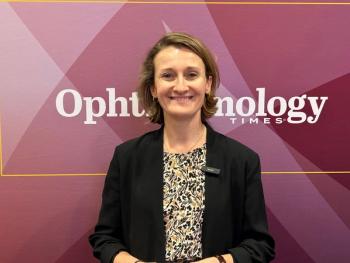
AGS 2025: Constance Okeke, MD, highlights 1-year Streamline canaloplasty outcomes
The research analyzed the 1-year outcomes of 132 eyes, evaluating mean IOP, baseline changes, medication reduction, and stratifying the results by race (African American vs Caucasian) and glaucoma severity (mild, moderate, severe).
Constance Okeke, MD, MSCE, summarized research posters presented by her mentees—Siddharth Bhargava, MD; Taylor Drake, BS; Kush Shah, BS—at the 2025 American Glaucoma Society Annual Meeting, held from February 26 to March 2 in Washington, DC. The posters highlighted the 1-year outcomes of the Streamline surgical system in patients with open-angle glaucoma (OAG) and ocular hypertension (OHT).
Okeke, a glaucoma specialist and cataract surgeon at Virginia Eye Consultants, as well as an assistant professor of ophthalmology at Eastern Virginia Medical School in Norfolk, noted that the study analyzed 132 eyes, focusing on IOP reduction, medication burden, and differences across racial groups and glaucoma severity levels.
The patient cohort had a mean age of 68.9 years, with 85% classified as mild OAG, 15% moderate, 17% severe, and 3% OHT. The procedures, performed by a single surgeon, showed a balanced racial distribution: 54% African American and 40% Caucasian.
Overall, the mean baseline IOP of 17.1 mm Hg dropped by 22.5% to 13.2 mm Hg at 1 year. The mean number of glaucoma medications decreased from 1.6 to 1.2. No statistically significant racial differences were observed in IOP reduction, indicating that Streamline provides effective outcomes across different racial groups.
Stratified by disease severity, IOP reductions at 1 year were:
- Mild OAG: 21.5% decrease
- Moderate OAG: 26.5% decrease
- Severe OAG: 19.5% decrease
Although all groups experienced significant IOP reduction, medication burden decreased most notably in the mild group, whereas the severe group saw minimal change in medication use.
Streamline is a novel minimally invasive glaucoma surgery (MIGS) device using ClickPulse technology to create goniotomies while delivering viscoelastic into Schlemm’s canal for canaloplasty. Okeke’s technique involved three to four goniotomies, extending across 3 to 4 clock hours, followed by viscoelastic application to optimize the procedure.
According to Okeke, these results suggest that Streamline is an effective MIGS option for reducing IOP across various glaucoma severities, with a particular advantage in medication reduction for milder cases.
Newsletter
Don’t miss out—get Ophthalmology Times updates on the latest clinical advancements and expert interviews, straight to your inbox.




















































.png)


